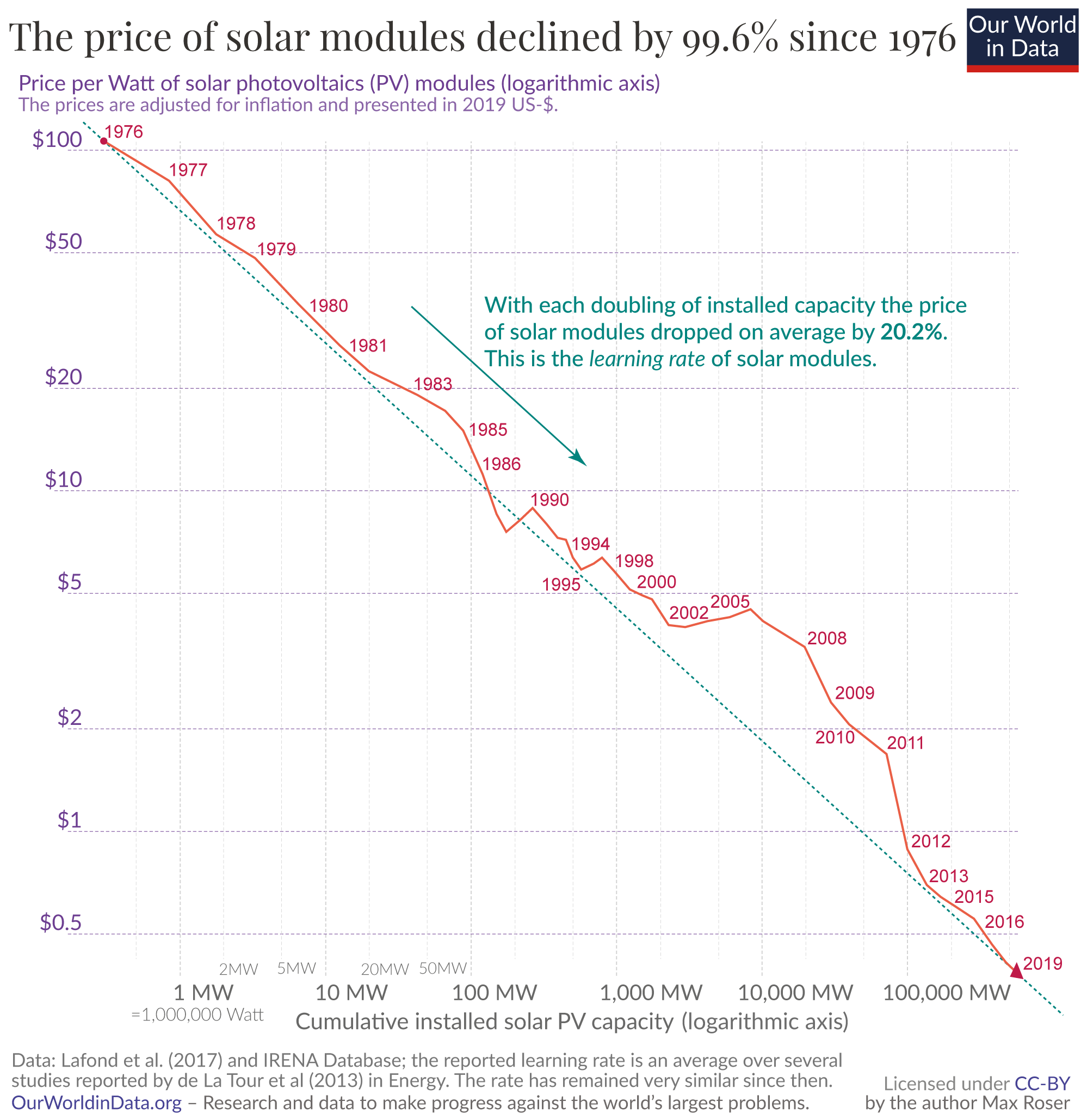Solar Power Blog

The Four Biggest Myths about Solar Energy
Depending on who you talk to or where you get your news, you may be under the false impression of one or more of the many myths that surround solar energy today.
As a technology and industry that has been rapidly evolving over the last 20 years, this is unfortunately pretty common – and it can be tough to discern what is true in the growing world of solar power versus what has been exaggerated, or in some cases, made up out of thin air.
So in an effort to clear up misinformation about solar panels for our readers, this article will highlight four of the most prominent misconceptions about solar energy today in order to bust common myths and separate fact from fiction.
Myth 1 | Solar is too expensive.
With high price tags for large installations, solar energy has a reputation for being too expensive for the everyday consumer.
Considering that an average residential solar energy system typically costs over $10,000 in the United States, it can be easy to see why many people believe that a solar installation may be simply financially out of reach.
In reality, however, it is important to remember that residential solar panels produce electricity for 20 years and more. By offsetting decades worth of utility power at home, solar panels will often pay for themselves in energy costs avoided (and more) for homeowners generating green electricity right on their roofs.
Even if you aren't planning to turn your entire property into a solar-powered homestead, you can still access solar energy products at extremely reasonable prices in the US today.
Thanks to advancements in technology, widespread material availability, and industry advancements, it has never been easier (or cheaper) to set up a small-scale solar energy system on a budget.

Image source: Wikipedia Commons
For homes, cabins, recreational vehicles, and more, there are many affordable solar energy products that can quickly bring renewable power into your life with cheap, clean electricity generated anywhere the sun shines.
Myth 2 | Solar is bad for the environment.
Despite the fact that solar energy is one of the most recognizable technologies associated with sustainability and activism against climate change, there are still some people who choose to believe that solar is bad for the environment.
Although it is true that some solar panels are made with small amounts of toxic chemicals which must be safely obtained and handled, the technology has been getting sustainably greener and the majority of today’s solar panels are created with widely available non-toxic materials and recyclable parts.
Image source: Raw Pixel
Compared to coal and other fossil fuels, many environmental risks can be reduced by renewable energy, the greenest of which is that solar panels do not produce carbon emissions while generating new power.
With today’s photovoltaic (PV) panels generating renewable electricity for 20 years and more, even a small solar power setup can offset a significant amount of carbon emissions over its operating lifetime.
Myth 3 | Solar will damage my roof.
Third, homeowners and RV owners alike may worry that solar will damage their roofs, potentially leading to more headaches and costs incurred later on.
Although this is a valid concern because improperly installed equipment can cause less-than-ideal consequences, fortunately, roof damage is a very rare occurrence in the world of professionally installed solar panels.

Image source: NARA & DVIDS Public Domain Archive
The Solar Energy Technologies Office in the US Department of Energy suggests that the best time to go solar is right after you’ve replaced your roof as both new shingles and panels can last for several decades.
Even more so, solar panels are very tough against the elements and can add a layer of protection to your roof - whether that is on your home, cabin, boat, or RV.
Myth 4 | Solar power has limited potential.
Finally, one of the most common practices with solar energy naysayers is doubting the overall potential of solar technology.
Although there are some valid points that favor other energy sources, it is fairly easy to “bet on” solar considering that the sun rises every and the entire world could theoretically be powered by a solar farm roughly the size of Arizona.
When considering the fact that solar panels can only generate new electricity with sunlight, related programs and technologies like net metering and battery storage have allowed this setback to become much less relevant.
Solar batteries have become increasingly available and affordable in the last five years, and can store solar power generated throughout the day for users to access solar electricity overnight or whenever grid power is unavailable.

Image source: NARA & DVIDS Public Domain Archive
In the same vein, there are also some myth-makers who like to paint a picture of solar panels as unreliable or too weak to provide large amounts of electricity at once.
To put it simply this couldn't be further from the truth as solar equipment is very reliable, unsusceptible to large amounts of maintenance, and can generate enough electricity to power homes, businesses, and major portions of the electric grid.
Learn more about solar energy with Solar Us Shop!
If you are interested to learn more about how solar works, feel free to check out our solar panel FAQ or discover more informative articles in our solar blog.
